
Published on December 3rd, 2013 | by Editor

Quarter Ton Class: Balancing history and passion
Published on December 3rd, 2013 by Editor -->
Efforts are underway to organize a “ One Ton Cup Revisited ” regatta, in Auckland, New Zealand, in February/March 2015. The regatta would celebrate the (near) 50th anniversary of the One Ton Cup switching from metre class yachts to offshore racers in 1965, using an international handicap rule to measure and rate contestants.
This was when interest in the Cup went global and led to One Tonners being regarded as the Formula One class of ocean racing. The rule increased the boat size in 1984, with the last One Ton Cup held using the IOR in 1994.
The smaller Quarter Ton boats have remained active in the UK, with the 2014 Coutts Quarter Ton Cup on June 25-27 to celebrate its 10 edition since being reborn in 2005 under the IRC rule.
Here are the Quarter Ton Class Rules 2013 that seek to balance the history of the boat and the passion of its sailors.

1. All boats shall have a current IRC Certificate with a maximum rating of 0.920.
2. All boats shall have a Series Age Date prior to 1996.
3. All boats shall have a Hull Series Date prior to 1996 (Note: Any hull changes should be pre-agreed with the Rating Authority to ensure that modifications do not alter the boat’s Hull Date.
4. All boats or a sistership shall have had an RORC Rating of 16 ft or less between 1967-1970 or an IOR Rating of 17 ft-18 ft for the years 1971-1978, or an IOR Rating of between 17.5-18.5 for the years 1979-1996.
5. Crew. The maximum number of crew shall be 5. However, where a boat is crewed by 5 females, that boat may carry a 6th crewmember.
6. The owner or joint owner shall steer the yacht in all Quarter Ton events. In exceptional circumstances, where the owner prefers not to helm, dispensation may be given for an ISAF Category 1 sailor to helm the boat (Alternate Helm). Permission for the Alternate Helm must be obtained from the Quarter Ton Class Secretary at least 7 days prior to any Quarter Ton event. Being ISAF Category 1 does not mean automatic acceptance as an Alternate Helm. The Alternate Helm will be expected to be a regular member of the crew.
7. Applications will be considered from boats for Quarter Ton events who believe that they were genuine Quarter Tonners but who are unable to prove an IOR or RORC Rating. The Secretary will seek the guidance of the RORC Rating Office whose decision shall be final.
8. Sail Numbers. In order to preserve the heritage of the Quarter Tonners from the early days, it is permitted to use the original sail designation and numbers. ie. K (GBR) I (ITA) F (FRA). The reasoning for this is that unless it is a class rule ISAF require the new three letter designations.
9. Bow Sprits and Prodders are not allowed, either fixed or retractable unless originally designed prior to 1996. All spinnakers must be tacked down to the yachts spinnaker pole, except when hoisting, gybing, approaching the bottom mark and dropping the kite.

Tags: IOR , IRC , One Ton Cup , Quarter Ton
Related Posts
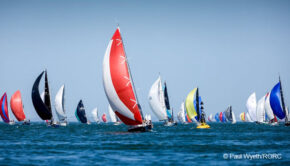
More transparency for IRC Rule →
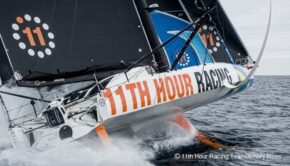
What if we were to rate autopilots? →
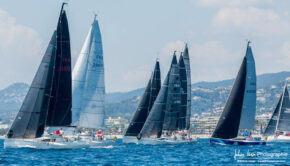
Rule changes for IRC in 2024 →

Walking the walk on limiting costs →
© 2024 Scuttlebutt Sailing News. Inbox Communications, Inc. All Rights Reserved. made by VSSL Agency .
- Privacy Statement
- Advertise With Us
Get Your Sailing News Fix!
Your download by email.
- Your Name...
- Your Email... *
- Name This field is for validation purposes and should be left unchanged.

- Yachting World
- Digital Edition

BLT: The inside story of the Quarter Ton Cup winner’s 10,000-hour refit
- April 21, 2020
The famous winner of the 1980 Quarter Ton Cup, BLT was tracked down in Tahiti before being smuggled back to Cowes for a 10,000-hour refit. Rupert Holmes reports
Owner Sam Laidlaw has enjoyed considerable success in the very competitive Quarter Tonner class . He gathered an impressive collection of trophies in the eight years he raced his Aguila , including the Quarter Ton Cup twice and the class at Cowes Week on four successive occasions.
When he was looking for his next boat he chose another Quarter Tonner, naturally. But the revived class doesn’t allow newly built boats, and there is now a finite collection of potentially competitive boats since the class’s rebirth in 2005 has seen a committed collection of owners restore many of the best vintage designs.
BLT was the Jacques Fauroux-designed Bullit, winner of the 1980 Quarter Ton Cup in New Zealand. In all just seven Bullits were built, three of which won consecutive Quarter Ton Cups in 1978, 1980 and 1981, and they have become increasingly sought-after.

Going well upwind. Note the pushpit and stanchions in black powder-coated stainless steel. Photo: James Tomlinson
BLT had been living out her retirement in the Pacific before she was rediscovered by Rob Gray, who has sailed with Sam Laidlaw for a couple of decades, including as joint owners of the classic Sparkman & Stephens One Tonner Clarinet .
Having recently sold Clarinet, the pair decided to take on the project together, and shipped BLT back to the UK. She was transported over to the Isle of the Wight under cover of night to be rebuilt in Cowes, and, amazingly the project stayed under the radar until shortly before she was launched for the 2019 Quarter Ton Cup.
There were already four Bullit designs in the Solent fleet, including Julian Metherell’s Bullit and Louise Morton’s Bullet , the latter winner of the 1979 Quarter Ton Cup in San Remo. Another Bullit design, Protis , winner of the 1981 championship, also won the 2019 Cup, in Ian Southworth’s hands.
Article continues below…

Belinda: This refurbished 1980s quarter tonner is a real labour of love
Spending around 1,800 hours and the price of a new boat on revamping a 30-year-old 26ft keelboat might seem extraordinary,…
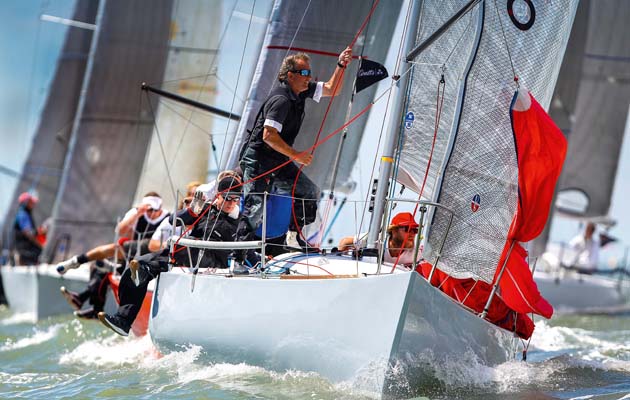
25ft quarter ton yachts have been having something of a revival racing in the Solent
They’re old, small and decidedly quirky, but quarter tonners are providing some of the hottest handicap racing in the Solent…
Given the potential for confusion with boats called Bullet and Bullit already based in Cowes, the name of the new boat was truncated to BLT . She’s the second or third iteration of the original design, but uniquely has a 2ft extension on the transom. This was added to improve performance in the heavy winds predicted for the New Zealand championship back in 1980.
It’s impossible to get near the top of this fleet unless a boat has been fully updated, so a full refit /rebuild was necessary. Gavin Tappenden at Composite Craft did all the boatbuilding, while Brett Aarons was responsible for deck layout and systems, paintwork, cosmetics, rig and some of the design work. “Basically I’d come up with a concept and then Gavin would draw it and build it,” Aarons says.
Structural changes
The hull was sheathed inside and out with extra layers of epoxy and glass to create a more solid base. However, everything needed to be removed from inside the boat. “There was lots of rotting plywood in there, with some of it not properly attached, so it all came out,” says Aarons. Some of the frames were also replaced and struts added to cater for the slightly different shroud base.

Control line runs below decks are kept as straight as possible, using string and pulley systems. Photo: Rupert Holmes
A big change was running new foam sandwich bunk fronts all the way aft to add a lot of extra longitudinal stiffness. Aarons says this is something learnt from sailing Aguila – the bunk fronts had to be extended in a similar way to prevent the top guard wire going slack when the backstay was heaved on tight. When that happens there’s also risk of little cracks opening up at each end of the keel.
BLT ’s original cambered deck and large coachroof needed replacing. The new coachroof is little more than a vestigial blister, which gives a larger cockpit and lots of room for moving around the side decks and foredeck, despite the diminutive size of a Quarter Tonner.
“The new deck was a bit like a trampoline,” says Aarons, “so we put some extra beams in to stiffen it. I wanted an unbreakable structure, whereas Gavin wanted it as light as possible. “He’s right in that it’s better to build it light and then see what you need to reinforce.” In total Aarons reckons close to 10,000 hours was spent on the refit over 13 months.

The revived Quarter Ton Cup (raced under IRC), has been running for 13 years. Photo: Paul Wyeth / Cowes Week
Deck and rig
Since Laidlaw would be racing BLT with the same team as he sailed Aguila , that boat’s deck layout was replicated as far as possible. The thinking was this allowed the crew to focus on boat speed, without worrying about different procedures for manoeuvres.
Beyond that, BLT ’s layout prioritises simplicity and minimising friction. Lines are run below deck wherever it makes sense to do so, including to purchase systems, which makes the deck layout look neater. The downside is a lot of string and pulley systems in the already cramped space below decks.
“A lot of boats have lines led all round the boat to a good place [for trimming],” says Aarons, “But I made an effort to lead things direct so there’s no friction. If you wanted to make the interior look really good you could have lines hidden under the bunks, but that would add friction and the reality is no one is going to spend time down there.”

The pole up/down and jib in-hauler controls adjust both sides simultaneously, so after a tack you will be sailing with exactly the same settings as before. This looks like a very neat system, but it’s no surprise Aarons says it was time-consuming to set up.
Keel and rudder
All the competitive Quarter Tonners have replacement keels and rudders, with the former noticeably heavier than the original keels.
BLT has a new rudder built by Composite Craft, and the Mark Mills-designed keel that was created for the Quarter Ton class revival and became a default choice among many owners refitting boats.
Some of the newly revived Quarter Tonners have since opted instead for a later keel design, but Aarons felt it wasn’t going to be right for the beamier BLT . “These boats are so wide I didn’t feel we needed that much righting moment,” he explains.
“Even then, at the Quarter Ton Cup we felt very upright and struggled to heel the boat, so we cut some lead off the bottom of the keel. That was much better.”
In her first season BLT was third at the Quarter Ton Cup, when she was fresh out of the sheds at Medina Yard. She followed that with an overall class win with a day to spare in a very windy Cowes Week. With Laidlaw’s team now having had a season in the boat, and with a few teething problems being fixed this winter, the prospects for BLT for the 2020 season look very strong.
Specification
LOA: 8.48m (27ft 10in) LWL: 5.98m (19ft 7in) Beam: 2.83m (9ft 4in) Draught: 1.6m (5ft 3in) Displacement: 1,404kg (3,090lb) Built: 1979/80 Design: Jacques Fauroux
First published in the April 2020 edition of Yachting World.
Great choice! Your favorites are temporarily saved for this session. Sign in to save them permanently, access them on any device, and receive relevant alerts.
- Sailboat Guide
Doug Peterson
Douglas Blair Peterson (July 25, 1945 – June 26, 2017) was an American yacht designer. Beginning with the One Tonner Ganbare in 1973, Peterson’s designs have pioneered many innovations in racing and cruising yachts After nearly winning the 1973 International One Ton Cup, Doug Peterson stated in an interview: “I started putting boats down on paper when I was 10, and have never wanted to do anything else.” This was GANBARE, clearly the fastest boat in the series (though, due to some tactical errors, she didn’t actually win). Built on a shoe string budget, and a huge gamble financially for him personally, GANBARE was the boat that clearly established his reputation. Another Peterson design, ‘Gumboots’, easily won the following year, proving that no other designer had ‘caught up’. Almost immediately, Doug Peterson became the designer in demand for IOR racing sailboats, around the world, for more than a decade. His firm employed many who went on to establish their own reputations as designers of racing sailboats. Later he became involved in several Americas Cup campaigns. A tribute page to this legendary designer has been set up on Facebook. Please click on the link above to contribute content.
66 Sailboats designed by Doug Peterson

Jeanneau Sun Legende 41

Peterson 44 Cutter

Kelly-Peterson 44

Peterson 34

Ood 34 (Contessa)

Contessa 35

Baltic 38 DP

Baltic 42 DP

Contention 30 (Peterson)
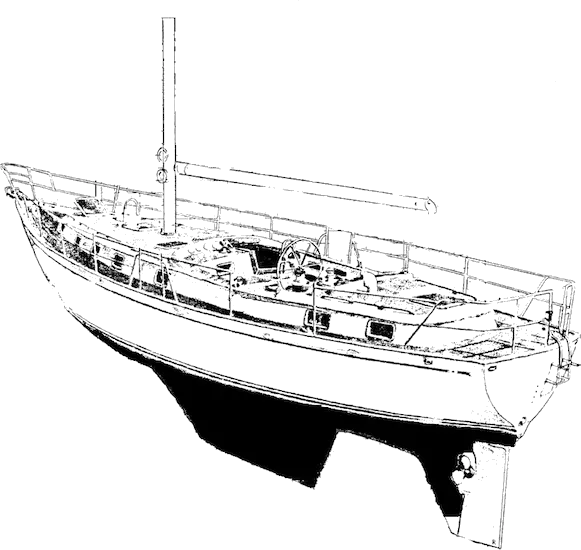
Kelly-Peterson 46
Grand soleil 50 (1992).

Serendipity 43

New York 40 (Peterson)
Ny 40 (peterson), peterson 36.

Baltic 48 DP

Cavalier 36

Passport 45 (Hoyt)

Contessa 39
Contessa 25 (peterson).

Baltic 55 DP

Peterson 38
Pinnacle 29.

Peterson 25 1/4 Ton

Bavaria Match 42

MG 26 (Peterson)
Jeanneau legende 1 ton.

Jeanneau Sun Fast 41

Bavaria Match 38
Peterson 30 1/2 ton.

Bavaria Match 35

Peterson 33 Chita
Hans christian christina 48.

Hans Christian Christina 52

Islander 40
Jongert 21s, cavalier 26.

Contention 33 (Peterson)


Impala 36 (Peterson)
Olympic sea 42.

Serendipity 43 R/C

Blazer 23 (Peterson)

8M One Design
Wiggers 37 (peterson).

Peterson 37

Contessa 43

Contessa 28

Pinnacle 30
Chita peterson 30.

Tartan Tangent One

- About Sailboat Guide
©2024 Sea Time Tech, LLC
This site is protected by reCAPTCHA and the Google Privacy Policy and Terms of Service apply.

- Search forums
- Practical Boat Owner's Reader to Reader
1/4 ton 1/2 ton etc please explain
- Thread starter pcatterall
- Start date 14 Sep 2010
- 14 Sep 2010
Well-known member
I keep reading articles related to the tonnages above ( and 1 ton etc). What dom these figures refer to please. They look far off displacement values for the sizes of yachts concerned.
I've asked the question of seriously knowledgable people and have never got an answer that explains what 'ton' has to do with it. There is a definition for each under the IOR rule. Multiple (or add?) up a load of parameters and if it is under a certain value it is a quarter-tonner, half-tonner etc.
In the early days there were a number of rough and ready schemes for measuring the size of boats for commercial and racing needs. Perhaps the most popular was Thames Measurement and this persisted almost to the present day, some old timers will still refer to a wooden boat as a 2 1/2 (very small) or 8 Tonner. Thames Measurement was a rum system which used length, bredth, cargo space and the skippers inside leg measurement to arrive at the given number - as you say no relation to displacement. If we accept that the various rating rules grew out of earlier practice then it is perhaps understandable that the notion of tonnage persisted. Many will still find it easy to picture an older style 1/2 or 1/4 tonner.
AFAIR from racing in the IOR days, the rules were aimed at calculating a 'nominal length' or some such term, from the actual measurements of each boat. The Ton, Half, Quarter, etc 'classes' were each given a 'length' and the designers had almost free reign to work the hull shapes and measurements to achieve the best speed for that nominal length. The Ton Rules produced boats which were cranky and tender, and without real downwind speed. Measurement points produced funny almost square hull shapes with longish overhangs. They were pretty difficult to sail optimally, and lost value very quickly as any new wrinkle (e.g. 'bustles') to take advantage of the rule made older boats very quickly uncompetitive.
I believe that it comes from the time when the IOR rating system was coming up with a level rating. The royal thames club had had a one ton cup prize for a class of thames racing yacht which was no longer being raced for and hence this was chosen as the cup to race for, the first level rating IOR boats were around 38' Then owners of smaller yachts wanted to have a level rating class and hence the 3/4, 1/2 and 1/4 ton classes evolved being roughly 34', 30', 24' and then the mini tonners at 18' But this could have been bar talk, the important thing is that the racing was close and the boats were fun to sail. What happend to Smokey bear, Panda, Nausicca, Heart of Gold (named after the hitch hikers guide space ship) Juno, Local Hero...that was back in 1985 in Porto Ercole
The irony of this thread is that it has been explained in the Magazine PBO in the past couple of months.
Tonnage in old boats refers to the Thames Measurement of a yacht. Nothing whatsoever to do with the weight of the boat but an arcane system of calculating the size of a boat allowing for its beam as well as length (but not I think its draft). The term derives from the medieval method of defining the size of a vessel by how many tuns (barrels) of ale it could carry. Different again is the Registered Tonnage and Gross Tonnage. A suprising number of owners think the tonnage carved on their main beam is the weight of their yacht but they are wrong. Tim w
- 15 Sep 2010
IOR Rule: Internationa Offshore Rule Intention: a measurement system that gave an assessment of the speed of a yacht and alowed a handicap number to be calculated IOR handicaps were expressed in feet Level rating bands were set to group boats of a similar size together and create level rating competions. The rating bands were set at: IOR rating of 16.5 = minitonner (&minimum size of boat quaifying for an IOR rating) IOR Rating of 18.5 = quarter tonner IOR rating of 21.5 = haf tonner IOR rating of 24.5(?) = 3/4 tonner IOR rating of 27.5 = 1 tonner, modified in 1982 to be 30.5 for 1 tonner to synchronise with the minimum rating for the admirals cup IOR rating of 50 = maxi class (maximum rating issued) simples.....
unikely unless measured under the IOR rule the rating number aso comes out at 18.5. Overall length is just one measurement that goes into the rating calculation. IOR "feet" are not measurements of length. Two almost identical boats could have different ratings depending on the size of spinnakers/mainsail (or a host of other things) and so rate e.g. 21.3 and 21.5 feet ....... but be exactly the same length. If you think IOR was confusing, then don't even start exploring IMS (which followed)
Even more confused. I've just read an early review of my boat and it has a "portsmouth yardstick number" of 127
Even Chance
My E-Boat is an IOR Mini-Ton class racing yacht. Its just under 1 Ton displacement, and 22 foot long. Figure that then!! Thats how the ruling goes. Its wierd, thats a fact!
Hi Dave, You sure? The E-Boat is 1050. Have a look at this list:- http://www.benfleetyachtclub.org/files/Portsmouth_HC/2004_PY_Cruiser_Handicaps.pdf
Even Chance said: Hi Dave, You sure? The E-Boat is 1050. Have a look at this list:- http://www.benfleetyachtclub.org/files/Portsmouth_HC/2004_PY_Cruiser_Handicaps.pdf Click to expand...
Handicap Rules all come down to one of two things: 1. a correction of your actual time so that boats of different sizes and shapes can race against each other 2. using a set of measurements with a final rating (number) all boats race against each other and the first across the line wins If you do any racing, you will quickly go from confusion (what do the handicaps really mean) to frustration (why do I always seem to lose even when I think I am saiing well) to exasperation (they aways win 'cos the've got a great handicap) eventually to understanding. Plymouth Yardstick is mainly aimed at dinghies but from the PY number, a TCF (time correction factor) is generated that is then used to adjust your elapsed time and should mean that equally well sailed different boat designs/types can fairly race against each other. Most yacht clubs run a similar local system or make local adjustments to the national/international systems. Handicap committee members are often well rewarded at the bar or get dogs abuse for their misunderstanding of the performance potential of someone's pride and joy. google CYCA for the Scottish handicap system The RORC office administer the IRC system and their website is worth a look Going back to the original thread topic, the rating rule that was used for the "ton" classes had an annual revision (November Offshore Racing Council meeting) and eventually it was abandoned because the boats were viewed as becoming too extreme, too expensive, not as much fun as they could be for the size/money, not creating good cruiser/racer compromises and a better, newer whizz bang rule was proposed that would cure all the evils of IOR by measuring the hull shape, weighing boats and using a velocity prediction programme so that internationally handicaps any boat could be measured and fairly handicapped. The IMS rule ..... IMS made race boats even more expensive, extreme and complicated and so it was binned. The ton-cup revivals have come about from those that want to race these "obselete" boats again as despite all the shortfalls, IOR racing in the late 70's and 80's was great fun. check out the 1/4 and 1/2 ton websites but don't for one minute confuse "feet" with length and "ton" with weight!
ProDave said: My boat's not on that list. The magazine review said 127, so perhaps it was a missprint and they meant 1270 ??? Click to expand...
Even Chance said: Maybe it is 1270. The higher the number, the slower the boat. What is it you have? Google "your boat Portsmouth yardstick" That list wasnt the definative list, just one from a particular club. I also see yer a local lad too!! Click to expand...
This rule produced boats that were so bad that Olin Stephens actually apologised publicly for his part in it's development.That said I used to own a Douglas Peterson designed 1/2tonner that sailed like a wich to windward and was very god on a reach but obviously preformed not so well on a run.An she wasn't in the least tender.
cliffordpope
The Thames Measurement formula was (Waterline length-Beam) X Beam X Beam X2, all divided by 94. Long ago the convention was to leave the result expressed as 94ths rather than simplifying to 1/4, 1/2 etc. So my 21 foot cutter built in 1882 with a WL length of 18 feet and a beam of 6 feet 6 inches has a TM of 2 55/94. It does in fact weigh about 2 1/2 tons. As recently as 1964 my father registered a 30 foot motor cruiser, and was given detailed instructions for having the calculated TM carved on the main beam, together with the "certified chart space". The full meaningless inscription, complete with the 94ths, then had to be traced on paper and sent to Lloyds to confirm that it had been done. If anybody still owns the motor yacht Lucy Carmichael, ex lifeboat from the P&O liner "Maloja", then the inscription will still be there.
Other threads that may be of interest
- Baggywrinkle
- 28 Feb 2024
- Yachting Monthly's Scuttlebutt
- 19 Feb 2024
- East Coast Forum
Members online
- Wandering Star
- RunAgroundHard
- MontyMariner
- justanothersailboat
- Slipstream 34
- Frayed Knot
- Rebel Rebel
- Seashoreman
- Barton Seagoon
- andrewbarker
Share this page
Design № 85
1/4 TON IOR
< Back to all designs
RACE RESULTS
FARR MAGAZINE
GET UPDATES
ENVIRONMENT
DESIGNS BY LENGTH
DESIGNS BY NUMBER
VOLVO OCEAN RACE
SUPERYACHTS
AMERICA'S CUP
This was the first IOR design we completed when the IOR Rule changed in November 1978 and was aimed specifically at the 1979 World Championships in Italy.
Existing light displacement 1/4 Ton yachts are penalized less by the new displacement length factor than larger yachts but even so, our previous style of design would have incurred too much penalty to be truly competitive compared to heavier styles of design.
Extensive computer analysis, comparing rating with known performance, has enabled us to pinpoint the correct value of DLF to produce optimum performance for the light conditions expected, and we have opted for a DLF much closer to 1.0 than any of our previous designs feature. The resulting design is therefore very slightly heavier than any of our previous 1/4 Ton designs, with slightly more beam and considerably more sail area.
The design has substantially better all round performer than previous generations and excels in light and moderate conditions. The general design concept is also be capable of being developed into a more powerful version to suit more windy climes.
PHOTOS Click to enlarge.
Description
7.70 m/25'3"
5.90 m/19'4"
2.80 m/9'2"
1.46 m/4'9"
1,340 Kg/2,950 Lbs
590 Kg/1,230 Lbs
DOWNLOADS & MORE INFORMATION
Sailplan >
Farr Yacht Design
100 Severn Avenue, Suite 101
Annapolis, MD 21403
© 2018
Log in or Sign up
You are using an out of date browser. It may not display this or other websites correctly. You should upgrade or use an alternative browser .
Old Quarter Tonners -Magic Bus
Discussion in ' Sailboats ' started by steveo-nz , Oct 5, 2008 .
Paul B Previous Member
Gary Baigent said: ↑ The thing about Ron Holland being from the NZ light displacement school, that is an overseas interpretation - but not a NZ one. His boats were always heavy jobs, masthead rigged with skinny sterns like Peterson, not kiwis. Click to expand...
Attached Files:
Manzanita sail and deck.jpg.
Gary Baigent Senior Member
Bullit An interesting bunch of kiwi and French designs over your way, Paul. One of the fastest 1/4 tonners I've seen was Jacques Fauroux's second Bullit, which came to Auckland in 1980 and thrashed all the hot kiwi designs on their home turf. Bullit was very long overall, full bowed, narrow on the waterline, yet fuller than the kiwi boats under the mast, dish shaped in cross section and very wide on deck – Farr could not see how the bow would lift when sailing, yet still measure bow down to rate. In the mostly very fresh conditions of the competition, Bullit just planed away, embarrassing the fleet during downwind legs. It would be interesting to see the outcome of a Melges 24/Bullit duel. It is also interesting that after that defeat New Zealand interest in IOR rapidly waned. Local sailors turned their backs on the IOR and concentrated their attention to the new Auckland movement in yacht design: fast, proportionately inexpensive (compared to IOR designs) non-Rule yachts designed gleefully along speed producing parameters that previously had been discouraged under IOR with penalties which verged upon banishment. jpeg of Jim Young's Rocket 40 - one of the most extreme no-rules designs.
rocket40.jpg
Ramona Senior Member
I have owned this Ben Lexcen designed quarter tonner for a few years now. Mine is a plywood hull, dynal covered and the deck is fibreglass balsa sandwich. They were built as production boats under the name of MW26, all the later ones were all fibreglass. Mines a 1970 model. 26 foot by just under 10 foot wide. It was dead cheap and I presumed it had a cast iron keel, never bothered to look underwater for that sort of money. When I put it on the slips I was expecting rust streaks from the keel but it was just covered in shell. When I cleaned it off I hit it with a grinder and was startled to find the keel was bronze. Delightful boat to sail.
CT 249 Senior Member
Great info here. One point is that Smackwater Jack couldn't have raced a brand new Corinthian since Corinthian was launched '74 or '75 and did the '75 AC trials, finishing fourth behind Inca, Barnacle Bill (both S&S) and Gerontius (Farr). I think the first M&W 26s (Solwarra and Chin Chin???) came out about '75; I sailed against them as a kid and still have a few magazine tests somewhere. Moody Blue was a flush deck one, in timber I think. I've seen an IRC or Handicap nationale (French PHRF) number for Bullitt; quick, but not quick by today's standards. The IOR mods would have pushed her rating to about 19+ feet without hull changes (IIRC, the article's in Seahorse somewhere) and if she was Melgi speed she would have still been a world-beater at that rating. "In fact, if I am remembering correctly, Pioneer Sound (B195) actually beat the fleet in the Aus Nationals, the run up regatta to the Worlds that year." B195 only sailed against one centreboarder in that OZ nats, the Farr Hecate; sister to the other Farrs but slower (although competitive later as the second Piccolo). The rest of the fleet were Farr 1104s (mainly the cruiser versions like Piccolo # 1), a Lidgard IIRC, a Ganbare and a Kaufman. Interestingly the Peterson and Ganbare went 1-2 in one of the light races. I love the IOR rule because it allowed close racing and (IMHO) a more meaningful win. I used to race against Buckle Up on the Skiff 38 Afterburner ('88 boat with wings, assy, full batten main, and full interior with two showers) and while it was great in some ways we really had no idea how we should have compared to Buckle Up. Sure, we were faster than IOR boats but if speed is what counts, why carry lead? Go multi or go rating or cruiser/racer!
fast IOR? hey CT249 I'll have to dig in the back shed re. Corinthian and Smackwater - but perhaps this was a revamped, retuned version that Smackwater beat in the 1977 Dunhill trials. Anyway I'll sort it. That skiff Afterburner sounds very avant garde - any pictures? Bullit was designed for the 1980 cup which she easily won, after that and knowing that heavy updated IOR penalties were to be imposed, Fauroux just shrugged, he'd designed Bullit for that year and had done the job. The somewhat low quality jpeg is from a Polaroid print of Bullit planing/surfing past the top Davidson or Farr - and looked as if it was going half again as fast, I don't care what the rating figures spit out, Bullit was really fast ..... for a monohull. Agreed, multihulls are the way - you're speaking to the long time converted here.
This Peterson half tonner, "half Measure" is for sale in Queensland for $22.000. That's got to be a good buy surely. Apparently a fast boat in light airs and plenty of history. Nice hull shape.
Gary Baigent said: ↑ One of the fastest 1/4 tonners I've seen was Jacques Fauroux's second Bullit, which came to Auckland in 1980 and thrashed all the hot kiwi designs on their home turf. Bullit was very long overall, full bowed, narrow on the waterline, yet fuller than the kiwi boats under the mast, dish shaped in cross section and very wide on deck – Farr could not see how the bow would lift when sailing, yet still measure bow down to rate. In the mostly very fresh conditions of the competition, Bullit just planed away, embarrassing the fleet during downwind legs. It would be interesting to see the outcome of a Melges 24/Bullit duel. Click to expand...
Bullit 2.jpg
CT 249 said: ↑ "In fact, if I am remembering correctly, Pioneer Sound (B195) actually beat the fleet in the Aus Nationals, the run up regatta to the Worlds that year." B195 only sailed against one centreboarder in that OZ nats, the Farr Hecate; sister to the other Farrs but slower (although competitive later as the second Piccolo). The rest of the fleet were Farr 1104s (mainly the cruiser versions like Piccolo # 1), a Lidgard IIRC, a Ganbare and a Kaufman. Interestingly the Peterson and Ganbare went 1-2 in one of the light races. Click to expand...
And the winners are: I found the list of winners. The designers are not noted. My feeling is the golden age really started in 1973 with Farr, Holland, and Peterson all joining the IOR fray. I'm working on a spreadsheet to get this all aligned: Past Winners from 1967 QUARTER TON CUP - PAST WINNERS 15ft. Rating RORC Rule 1967 La Rochelle DEFENDER (B) 1968 Breskens PIRHANA (H) 1969 Breskens LISTANG (G) 1970 Travemunde FLEUR D'ECUME (F) 18ft. Rating IOR 1971 La Rochelle TEQUILA (F) 1972 La Rochelle PETITE FLEUR (F) 1973 Weymouth EYGTHENE (US) 1974 Malmo ACCENT (S) 1975 Deauville 45 SOUTH (KZ) 1976 Corpus Christi MAGIC BUS (KZ) 1977 Helsinki MANZANITA (E) 1978 Sajima MAGICIAN V (J) 18.55ft. Rating IOR 1979 San Remo BULLIT (F) 1980 Panmure BULLIT (F) 1981 Marseille LACYDON PROTIS (F) 1982 Melbourne QUARTERMASTER (KA) 1984 Nieuwpoort COMTE DE FLANDRES (F) 1985 Ajaccio ROYAL FLUSH (SA) 1986 Copenhagen COMTE DE FLANDRES (KA) 1987 Crosshaven MCDONALDS (D) 1988 Travemunde MCDONALDS (D) 1989 Falmouth MERIDIAN (I) 1990 Bayona AVE (E) 1991 Porto Carras MARFRIO PIRANHA (I) 1992 Chioggia JONATHAN VI (ITA) 1993 Bayona GEN-MAR (ITA) 1994 Warnemunde B & BV (ITA) 1995 Gdynia PER ELISA (ITA) 1996 Travemunde PER ELISA (ITA) Under IRC 2005 Cowes PURPLE HAZE (GBR) David Thomas 2006 Cowes ENIGMA (GBR) Ed Dubois 2007 Cowes ESPADA (GBR) Bruce Farr 2008 Cowes Tom Bombadil (GBR) Doug Peterson
and the Half Tonners: Rating: 18 ft RORC Rule Year Location of Cup Winning Boat Homecountry of winner 1966 La Rochelle RAKI France 1967 La Rochelle SAFARI France 1968 La Rochelle DAME D'IROISE France 1969 Sandhamn SCAMPI Sweden 1970 Sandhamn SCAMPI II Sweden Rating: 21.7 ft Rating IOR 1971 Portsmouth SCAMPI III Sweden 1972 Marstrand BES Denmark 1973 Hundested IMPENSABLE France 1974 La Rochelle NORTHSTAR Germany 1975 Chicago FOXY LADY Australia 1976 Trieste SILVER SHAMROCK Ireland 1977 Sydney GUNBOAT RANGIRIRI New Zealand 1978 Poole Wave Rider New Zealand Rating: 22.05 ft Rating IOR 1979 Scheveningen Wave Rider New Zealand 1980 Sandhamn AR BIGOUDEN France 1981 Poole KING ONE Denmark 1982 Piraeus ATALANTI II Greece 1983 Hanko FREE LANCE France 1984 Troon COFICA France 1985 Porto Ercole ANTHEOR France 1986 Helsinki COFICA France 1987 La Rochelle RENE CHATEAU VIDEO France 1988 Poole SKIPPER ELF AQUITAINE France 1989 Le Havre SKIPPER ELF AQUITAINE France 1990 Howth INNOVATION GROUP Ireland 1991 Jakobstad HASSE FROM FINLAND Finland 1992 Chioggia MARFRIO Spain 1993 Bayona ATALANTI II Greece Rating: IRC 2003 Nieuwpoort GENERAL TAPIOCA Belgium 2005 Dinard GINKGO France
steveo-nz Junior Member
Paul B said: ↑ I found the list of winners. The designers are not noted. My feeling is the golden age really started in 1973 with Farr, Holland, and Peterson all joining the IOR fray. I'm working on a spreadsheet to get this all aligned: Past Winners from 1967 QUARTER TON CUP - PAST WINNERS 15ft. Rating RORC Rule 1967 La Rochelle DEFENDER (B) 1968 Breskens PIRHANA (H) 1969 Breskens LISTANG (G) 1970 Travemunde FLEUR D'ECUME (F) 18ft. Rating IOR 1971 La Rochelle TEQUILA (F) 1972 La Rochelle PETITE FLEUR (F) 1973 Weymouth EYGTHENE (US) 1974 Malmo ACCENT (S) 1975 Deauville 45 SOUTH (KZ) 1976 Corpus Christi MAGIC BUS (KZ) 1977 Helsinki MANZANITA (E) 1978 Sajima MAGICIAN V (J) 18.55ft. Rating IOR 1979 San Remo BULLIT (F) 1980 Panmure BULLIT (F) 1981 Marseille LACYDON PROTIS (F) 1982 Melbourne QUARTERMASTER (KA) 1984 Nieuwpoort COMTE DE FLANDRES (F) 1985 Ajaccio ROYAL FLUSH (SA) 1986 Copenhagen COMTE DE FLANDRES (KA) 1987 Crosshaven MCDONALDS (D) 1988 Travemunde MCDONALDS (D) 1989 Falmouth MERIDIAN (I) 1990 Bayona AVE (E) 1991 Porto Carras MARFRIO PIRANHA (I) 1992 Chioggia JONATHAN VI (ITA) 1993 Bayona GEN-MAR (ITA) 1994 Warnemunde B & BV (ITA) 1995 Gdynia PER ELISA (ITA) 1996 Travemunde PER ELISA (ITA) Under IRC 2005 Cowes PURPLE HAZE (GBR) David Thomas 2006 Cowes ENIGMA (GBR) Ed Dubois 2007 Cowes ESPADA (GBR) Bruce Farr 2008 Cowes Tom Bombadil (GBR) Doug Peterson Click to expand...
So what exactly are you allowed to do to the old 1/4's to still race them in the worlds, I see that some have completely new rigs/keel/rudder, even major structural stuff like decks Any one know exactly how they rule on these types of modifications??
steveo-nz said: ↑ So what exactly are you allowed to do to the old 1/4's to still race them in the worlds, I see that some have completely new rigs/keel/rudder, even major structural stuff like decks Any one know exactly how they rule on these types of modifications?? Click to expand...
I think I can put designers to most of those tomorrow. Paul, the Kaufman and Ganbare took the first 2 spots, ahead of the centreboarders and Farrs. S Jack's mods included putting on a "puller" prop as well, after she won the trails. In contrast to her mods when she was winning, Red Lion's navigator joked that when she started winning he even kept on using the same pencil for chartwork because they were too scared to touch anything! My book's on the dinghy side throughout history, but it's been sitting 98% complete for a couple of years, ever since I started running a class association as well as work, 4 kids, an ancient half tonner, 5 dinghies and 17 windsurfers. I've seen Comte de Flandre's specs in Seahorse, I think; I don't think she reached 8.5m, but I may be wrong. My recollection from articles (and a phone call to the guy who won a worlds in her) was that her secret was her clean, wide Briand stern. He was a great designer IMHO, with a distinct style. Pity we don't get much of that in these box rule days. Aust and NZ had some bloody quick little boats too in that era. The '71/72 era trailable RL24 rates (depending on version) as fast or quicker than a mid '70s/late '70s quarter. In the '60s we had the Highlander 25, basically a tempest with a cabin and an extra trap. But here, most people with boats over 20' wanted to cruise or to race offshore. Perhaps significantly, we've never had bigger fleets than in those days of dual-purpose boats. BTW Gary, I personally don't feel multis are "the way"; sheer speed in a big boat is not my thing since raw speed is so much cheaper and easier to get in a board, small cat or dinghy. They are great boats, but while my family's been in multis for three generations many of us, like me, personally prefer leadmines; I just love the feel, heel, room and cost. It's just that I just can't work out why people try to make them fast. No matter what you do, no leadmine is going to be fast for its size or cost. Making a fast leadmine seems a bit like trying to grow the world's biggest bonsai tree, or having the world's lowest falsetto. I do respect the way you can appreciate both a mono and a multi; one-eyed multimaniacs are at least as bad as mono-maniac bigots!
- Advertisement:
CT 249 said: ↑ My book's on the dinghy side throughout history, but it's been sitting 98% complete for a couple of years, ever since I started running a class association as well as work, 4 kids, an ancient half tonner, 5 dinghies and 17 windsurfers. Click to expand...
what was wrong exactly with design of old sailing "ships"?
1950's Raven sailboat (Cold molded hull questions)
Golden Shamrock 30 - mast corrosion
Holder 20 keel corrosion
Golden Globe race - the finish
Cold-moulded dinghy plans?
Massive Southern Ocean Storm Hits Golden Globe Fleet
Help identifying old wooden sailboat
New sailplan for a "good old boat" - foolish idea?
Interesting "scow bow" on an old Route de Rhum competitor "Ovum"
- No, create an account now.
- Yes, my password is:
- Forgot your password?


Farr 1/2 Tonner
Used yachts for sale, sail monohulls 30ft > 35ft, farr boats for sale, farr 1/2 tonner boats for sale.
This website uses cookies . This allows us to offer you the necessary functionalities and also improve your user experience. If you visit our website, you agree to the cookie statement
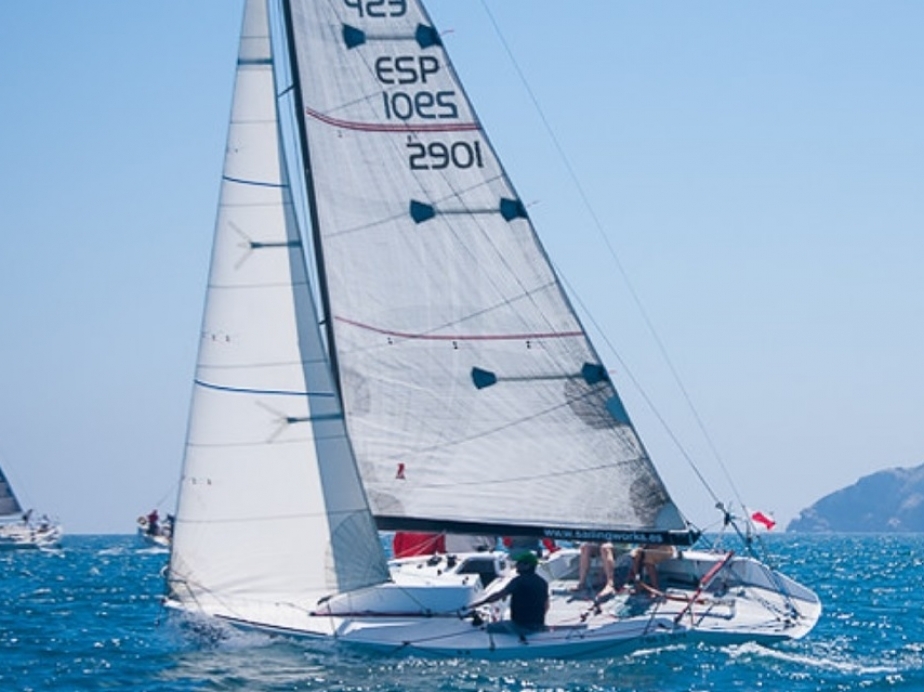
Quarter Tonner by JOUBERT, 1/4 tonner
€18,000
VAT included
- Reference ID 501
- Builder One-Off
- Model Quarter tonner Joubert
- Joubert Nivelt
- Location Spain
- L.O.A. (mtr) 7.77
- Beam (mtr) 2.75
- Draft (mtr) 1.534
- Displacement (Kg) 1314
- Engine Renault
Send to friend
Yacht description.
Proto Quarter ton designed by Michel JOUBERT and built in Sandwich carbon-Kevlar
1/4 tonner in very good condition, she had a full refit in 2018
- 2 folding blades propeller
- Antifouling Hempel SlicOne February 2020
- New hull paint Riveryachtcoating feb. 2020
- Standing rig full dyform 2018
- Main One Sails Vector3 2019
- Main for training / transport good condition
- Genoa 1 130% One Sails 2020
- Genoa 2 110% Quantum, old
- Genoa 3 105% dacron, old, good condition
- Spi large Quantum, Perfect condition
- Midium medium Quantum, good condition
- Spi small, old
Deck and Cockpit
Deckhardware renewed totally 2018
Complete electrical system 2018
- Mastervolt battery charger
- Two Bosch 2018 batteries
- Navigation lights and masthead
- LED interior lighting
Electronics and Navigational Gear
Autopilot Raymarine St6000
The Company offers the details of this vessel in good faith but cannot guarantee or warrant the accuracy of this information nor warrant the condition of the vessel. A buyer should instruct his agents, or his surveyors, to investigate such details as the buyer desires validated. This vessel is offered subject to prior sale, price change, or withdrawal without notice.
Contact Details
- Name Site Broker | Racing-Yachts.com
- Email [email protected]
- Phone 1234567
- Instagram -
Featured Yachts For Sale
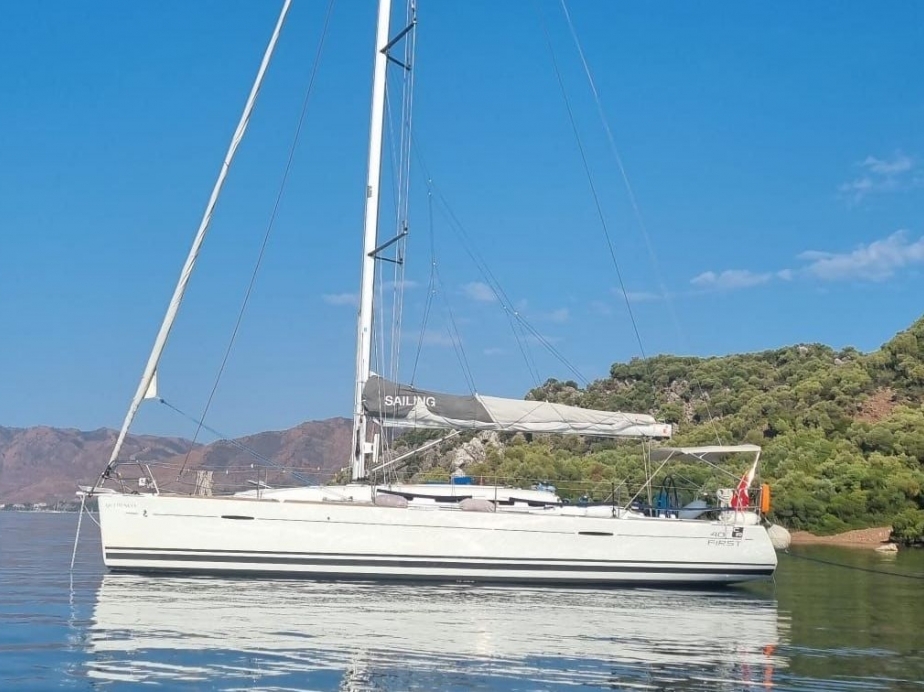
- Displacement (Kg): 7500
- Beam (mtr): 3.86
- L.O.A. (mtr): 12.26 Meters
- Horsepower: 40 hp
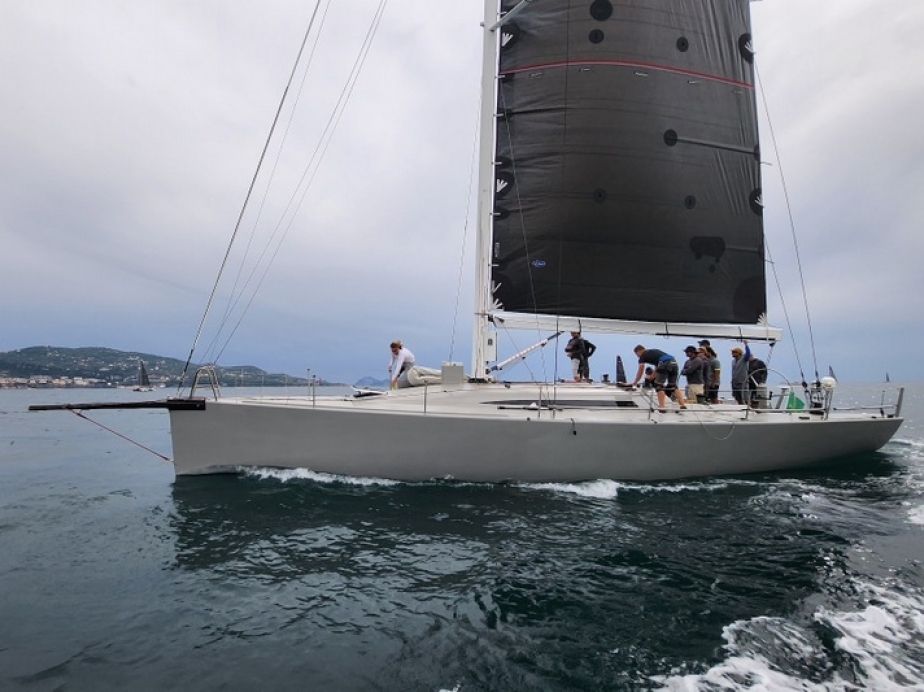
- Displacement (Kg): 7400
- Beam (mtr): 4.27
- L.O.A. (mtr): 15.22 Meters
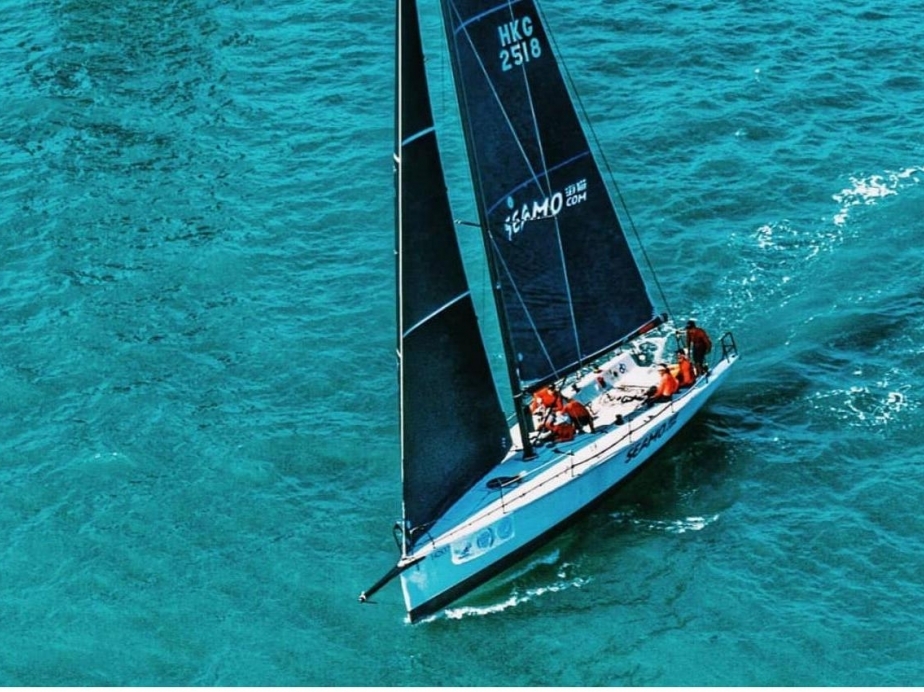
- Beam (mtr): 3.75
- L.O.A. (mtr): 12.32 Meters

- CLASSIFIEDS
- NEWSLETTERS
- SUBMIT NEWS
-728x90-202108170129.png)
Half Tonner
Since 2004 The Half Ton Class Europe is guiding the revival of the former IOR half tonners. Half tonners are 9m long sailing vessels, build to the IOR rating rules from 1967 to 1992. A boat is considered as a 'half tonner' if it fulfills the following requirements: • if it has been designed & build as a prototype one-off in the period between January 1st 1967 and December 31st 1994, and • if it has been once eligible to participate at an edition of the IOR Half Ton Cup, and • if no alterations have been made to the hull of the boat (except keel & rudder). Every production boat derived from the hull of a prototype one-off half tonner will also be considered as a half tonner.
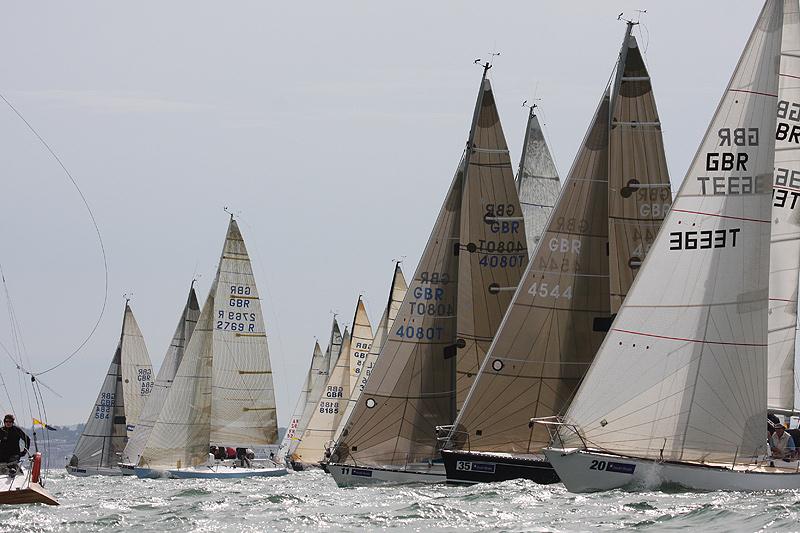
- Latest videos, from 2017
Show photos from latest 2024 2023 2022 2021 2020 2019 2018 2017 2016 2015 2014 2013 2012 2011 2010 2009 2008 2007 2006 2005 2004 2003 2002 2001 2000 1999 1998 1997 1996 1995


IMAGES
VIDEO
COMMENTS
Displacement: 1,341kg (2,956lb) Headsail area: 14.85m 2 (159.8ft 2) Spinnaker area: 45.46m 2 (489.3ft 2) First published in the November 2017 edition of Yachting World. Rupert Holmes looks at the ...
1978 IOR One tonner. This 1 ton yacht, glued to form in wood and designed by Gary W. Mull USA, is an absolute IOR unique specimen and, after a very extensive refit, is in very good condition both technically and visually. "HighNoon" is suitable for day, touring and regatta sailing. A puristic, classic sailing yacht that is an asset to any area.
This yacht was authentically restored between 1999 and 2003 by the Cantiere Navale dell'Argentario, in Tuscany, and is the last 19th-century Godinet rater. Calypso: designed and built in 1911 to rate as a 3-tonner; Olympic Games. ... 1900: .5 to 1 ton Race: 1 details
1960s one-tonner Clarionet in 2009. One Ton class was an offshore sailing class, which raced for the One Ton Cup, of the RORC 22 foot rule between 1965 and 1970, and then the International Offshore Rule between 1971 and 1994. [1] [2] The IOR rated length was 27.5' from 1971 to 1982, then in order to match the minimum class of the Admiral's Cup ...
Now, with the Cup long since fought over, 2-time One Ton Cup champion Chris Bouzaid (1969 and 1972) and the Royal New Zealand Yacht Squadron are seeking an indication of potential interest in a ...
The owner or joint owner shall steer the yacht in all Quarter Ton events. In exceptional circumstances, where the owner prefers not to helm, dispensation may be given for an ISAF Category 1 sailor ...
Draught: 1.6m (5ft 3in) Displacement: 1,404kg (3,090lb) Built: 1979/80. Design: Jacques Fauroux. First published in the April 2020 edition of Yachting World. The famous winner of the 1980 Quarter ...
Mostly an old thing. The One Ton Cup itself originated in France, in the late C19th, raced for under a French rating rule. Having been raced for in 6 metres in the interim, in the 1960s, it moved to the RORC rule and from their to the IOR. From the original one tonners, various other sizes developed: quarter, half, three quarter, and two tonners.
These yachts were also present at the 1900 Olympic Games, in the 0.5 to 1 tonner class. The first Cup took place from 2 May 1899 in Meulan. ... The first One Ton Cup in racing-cruising yachts was raced off Le Havre in 1965 by fourteen yachts. The winner was the Danish yacht Diana III. The real-time racing formula, including a race on the open ...
List it for free and it will show up here. Advertisement. Heritage 1 Ton is a 37′ 0″ / 11.3 m monohull sailboat designed by Charles Morgan and built by Heritage Yacht Corp. and Morgan Yachts starting in 1975.
ONE TON Class, Rome, Italy. 5,166 likes · 134 talking about this. The One Ton Cup is a trophy presented to the winner of a sailing competition created in 1899 by the Cercle de la voile de Paris...
#2482, Lacoste 42, Dufour Yachts. Dan James. Vettore Rosso. May 19, 2021. 2331, Swan 76, Nautor's Swan, Finland. Dan James. Tigris. One Tonner. Dan James. November 10, 2020 #1857, One Tonner, Félix Silvestro, France. ... -Built 1967 at the Wilenius boatyard for Mr. Sven Gronblom as a RORC Rule One-tonner-Mahogany on oak frames-LOA 37' View ...
Quarter Ton Class, (RORC, IOR, IRC) Great choice! Your favorites are temporarily saved for this session. Sign in to save them permanently, access them on any device, and receive relevant alerts.
Proto Quarter ton designed by Michel JOUBERT and built in Sandwich carbon-Kevlar 1/4 tonner in very good condition, she had a full refit in 2018. I understand. ... Name Site Broker | Racing-Yachts.com; Email [email protected]; Phone 1234567; Instagram-Featured Yachts For Sale. Code 10. €170,000. Year: 2020; Displacement (Kg): 2010;
1945 — 2017. Douglas Blair Peterson (July 25, 1945 - June 26, 2017) was an American yacht designer. Beginning with the One Tonner Ganbare in 1973, Peterson's designs have pioneered many innovations in racing and cruising yachts After nearly winning the 1973 International One Ton Cup, Doug Peterson stated in an interview: "I started ...
1953 - 2016. The first time Ed Dubois designed a yacht it won the British Trials for the Three Quarter Ton Cup, the RORC Class IV overall prize and the Solent Points Championship. In its first year. That was 1976 and the boat was Borsalino Trois. It attracted enough attention to launch both a racing career and Dubois Naval Architects ...
While some IOR yachts race at club level under IRC in more or less their original form, others had major surgery to make them competitive within the new rules. ... 1/4 Ton, 1/2 Ton, 3/4 Ton and Two Ton classes, as well as unofficial 50-footer, ULDB 70, and Maxi classes. The official classes each had an annual world championships.
The Thames Measurement formula was (Waterline length-Beam) X Beam X Beam X2, all divided by 94. Long ago the convention was to leave the result expressed as 94ths rather than simplifying to 1/4, 1/2 etc. So my 21 foot cutter built in 1882 with a WL length of 18 feet and a beam of 6 feet 6 inches has a TM of 2 55/94.
1/4 TON IOR. This was the first IOR design we completed when the IOR Rule changed in November 1978 and was aimed specifically at the 1979 World Championships in Italy. Existing light displacement 1/4 Ton yachts are penalized less by the new displacement length factor than larger yachts but even so, our previous style of design would have ...
Back in the 70s and 80s I had the opportunity to sail on a lot of boats, including Farr 727 (1/4 Ton), 914 (1/2 Ton), and 1104 (One Ton). Great boats when the breeze was on, a bit of a problem against the masthead boats in the light stuff. Here in SoCal it is almost always light stuff. That was one thing about the old IOR, you could tailor your ...
Lead Fin Keel. Draft 1.589 meters. Arona (Lambertini) inboard rebuilt 2011 Serviced 2020 including new water pump 2021 Folding prop treated with Propspeed 2020. 2020 Out of water survey. Sail Inventory: Main Good Condition. #1 Genoa Good Condition. #2 Genoa Good Condition. #3 Genoa Good Condition.
Proto Quarter ton designed by Michel JOUBERT and built in Sandwich carbon-Kevlar 1/4 tonner in very good condition, she had a full refit in 2018. I understand. ... Name Site Broker | Racing-Yachts.com; Email [email protected]; Phone 1234567; Instagram-Featured Yachts For Sale. ClubSwan 50. €775,000. Year: 2016; Beam (mtr): 4.21;
Half Tonner. Since 2004 The Half Ton Class Europe is guiding the revival of the former IOR half tonners. Half tonners are 9m long sailing vessels, build to the IOR rating rules from 1967 to 1992. ... The fleet is set for Hankø Yacht Club, Norway in August Posted on 26 Jul 2023 Bristol Channel IRC Championships leg 2 Portishead Boat Ctrl-J wins ...